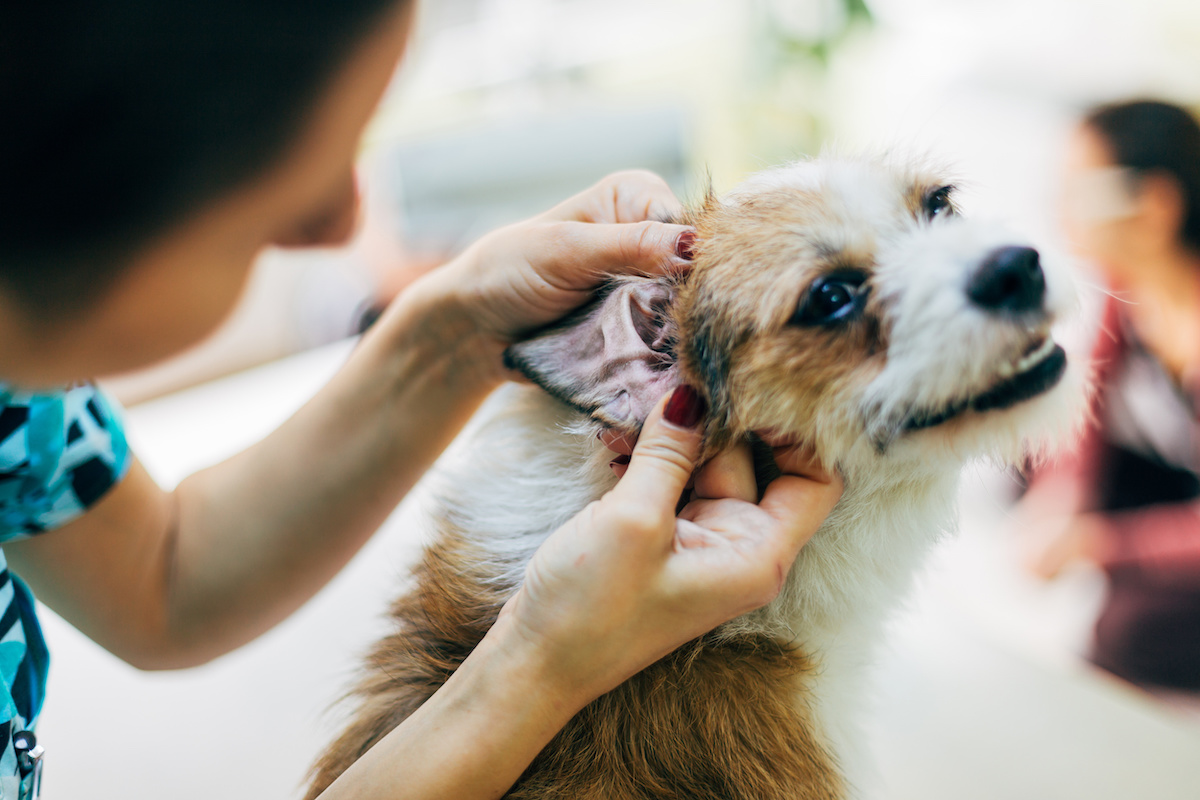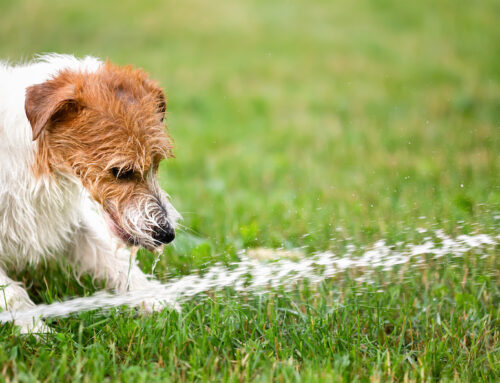You bathe your dog regularly, clip his nails, and keep his fur trimmed. But there’s one area of grooming you may be overlooking: ear care for dogs! Whether they
are pointed or floppy, cropped or au natural, your dog’s ears are a sensitive area and require special care. The pH balance of the skin in a dog’s ear is delicate, and even the slightest change can cause an infection.
When it comes to ear care for dogs, ear infections are quite common. This is due to the shape of their ear canal. Up to 20% of dogs have some form of ear disease at any time.
Thankfully, there are plenty of things you can do to prevent and treat ear infections in dogs. If your dog experiences any itching, redness, discharge, or other irritation in their ears you should contact your veterinarian as soon as possible.
This article will discuss ear care for dogs and how to recognize, prevent and treat ear infections.
What Are the Signs of an Ear Infection in Dogs?
When your dog isn’t feeling well it can be difficult to know what’s wrong. After all, it’s not like they can tell you where it hurts. So it’s important to pay attention to any changes in behavior.
If your dog exhibits any of the following signs, they may be suffering from an ear infection:
- Excessive head shaking
- Scratching at the affected ear
- Agitation or whining
- Redness or swelling of the ear canal
- Foul odor coming from their ear
- Black or yellow discharge from the ear
- Scabs or crusting in the ear canal
- Balance irregularities
If you notice any of these signs of ear infection in your dog, contact a vet right away. They will do an exam to rule out any injuries and prescribe an antibiotic to clear up the infection.
Ear infections are usually pretty simple to fix. But if left untreated the infection, can become very painful for your dog. If the ear canal continues to swell, it can even cause the eardrum to rupture resulting in permanent hearing loss.

What Is Causing Your Dog’s Ear Infection?
Ear infections can be caused by many different things. This includes issues such as yeast, fungus, or ear mites but the most common culprit is bacteria.
Unlike humans, your dog’s ear canal is L-shaped, which holds fluid and moisture in their ear long after their bath or swim. The warm moist environment is a perfect breeding ground for bacteria and makes them vulnerable to ear infections.
Any dog can get an occasional ear infection, but if your dog seems especially prone to them, your vet may want to investigate an underlying cause.
Factors that may increase your dog’s risk of an ear infection include;
-
- Allergies– The most common cause of recurrent ear infections in dogs is allergies. Dogs who have skin or food allergies may get frequent ear infections.
- Wax or foreign objects– Excessive wax and foreign objects such as hair or dirt needs out of your dog’s ear. Otherwise, it can attract bacteria and create an infection.
- Parasites– Mites, ticks, fleas, and other parasites can irritate your dog’s ears and spread bacteria.
- Medical conditions- Some medical conditions such as thyroid disease, autoimmune disorders, or ear polyps can cause frequent ear infections.
- Floppy ears- Dogs with long floppy ears are more prone to ear infections. This includes brreeds such as basset hounds, cocker spaniels, or beagles. They may experience more ear infections because the ear blocks air from dying the ear naturally.
Preventing Ear Infections in Dogs
Ear infections can be annoying and painful for your pooch, but they can be prevented with the right ear care for dogs.
The best way to prevent ear infections is to keep your dog’s ears dry. Moisture is a breeding ground for bacteria and yeast, which cause ear infections. Dry your dog’s ears thoroughly with a towel any time they become wet. If your pup is prone to ear infections, try earplugs made especially for dogs to block out water before bathing or swimming.
Cleaning your dog’s ears regularly is also an important part of preventing ear infections. However, it’s important not to clean them too frequently. When this happens, you can actually cause an infection. So, how often should you clean your dog’s ears?
A normal healthy pup should have an ear cleaning no more than once every month or two. Dogs with dirty or smelly ears, or those who are prone to infections, can have more frequent cleanings.
How to Clean Your Dog’s Ears At Home
If your dog goes to a professional groomer, they will most likely clean your dog’s ears as part of their bath so you won’t have to worry about it. However, if you need to clean your fur baby’s ears at home, follow these steps to make the process easier for both of you;
-
- Find a good ear cleaning solution– The internet is full of recipes for DIY dog cleaning solutions. However, many contain harsh ingredients such as hydrogen peroxide or alcohol which can irritate the delicate tissue in your dog’s ear and lead to infection. The safest option is to purchase a reputable commercial ear cleaning solution from your veterinarian or local pet store. When in doubt, ask your vet for a recommendation.
- Gather your supplies– You will need your cleaning solution, gauze or cotton balls, and a clean dry towel. Avoid using anything pointy, including Q-tips, which can push debris deeper into your dog’s ear canal and cause injury. Gather up all your supplies and keep them within arm’s reach before you start working on your pup.
- Make your dog comfortable- Many dogs enjoy having their ears cleaned but some require a little coaxing. Bring your dog into a contained area that’s OK to get a little messy, such as a bathroom. Pet and soothe them until they’re calm and agreeable. If they seem nervous, consider distracting them with a treat that takes a while to finish such as a smear of peanut butter on a licking mat.
- Fill ‘er up– Expose their ear canal and carefully fill it with the cleaning solution. It may take quite a bit of solution, but this allows the solution to reach deep into the ear. Avoid touching the ear with the tip of the bottle as it can introduce bacteria.
- Wait 30 seconds- Massage the base of the ear for about 30 seconds to allow the solution to drain down and fill up the ear canal. You will hear a little bit of swishing, crackling, or bubbling as the wax and debris dislodge.
- Shake it out- Allow your dog to shake their head. This will be messy, but it gets the cleaning solution and debris out of their ear canal. Hold your towel up to minimize the mess.
- Wipe out the gunk- Use the gauze or cotton balls to gently wipe out your pup’s ear. Don’t try to go very deep into the ear, focus on the outer ear flap and the entrance to the ear canal.
In between cleaning you may need to wipe your dog’s ear flap clean. You can use a 50/50 solution of water and vinegar applied with a cotton ball to wipe the folds of the outer ear. Do not use this solution to clean the inner ear.
Get More Advice on Ear Care for Dogs at Animal Care Center
Ear infections can be an unpleasant experience for you and your pup. Some dogs are prone to frequent ear infections, especially if they have allergies or long ears. If left untreated, these infections can cause considerable pain and permanent damage.
If your dog is showing signs of an ear infection or you have questions about their ear care call the Animal Care Center to schedule an appointment.






